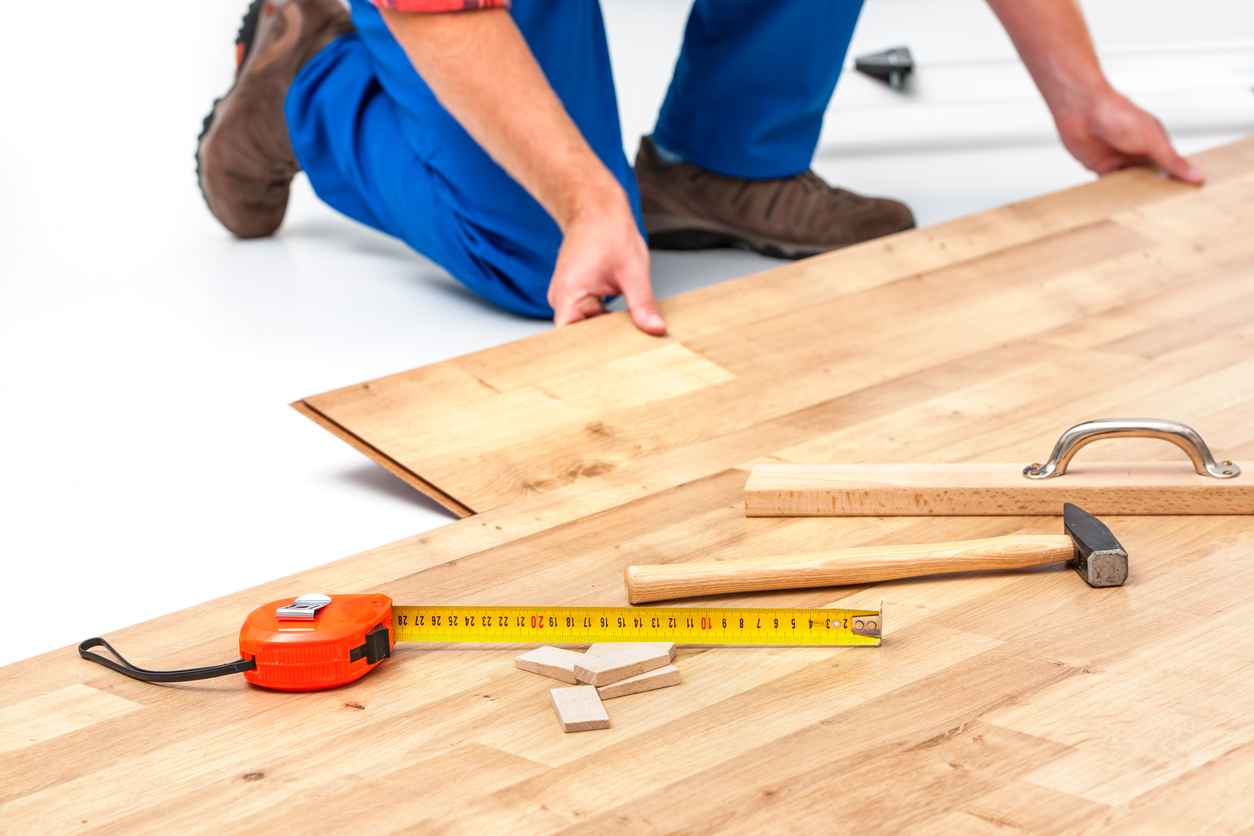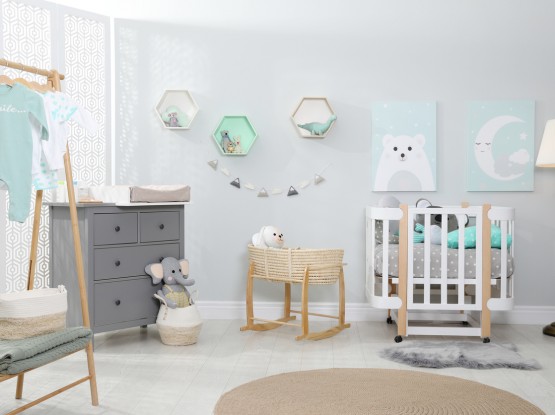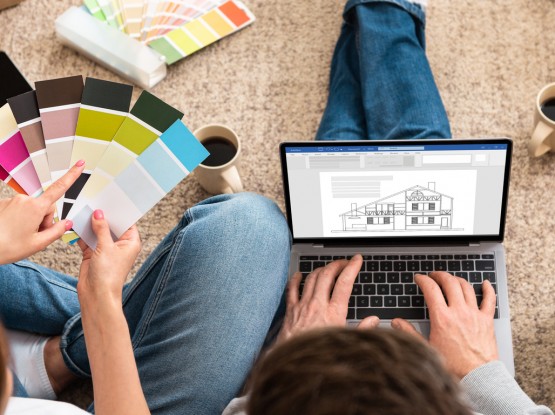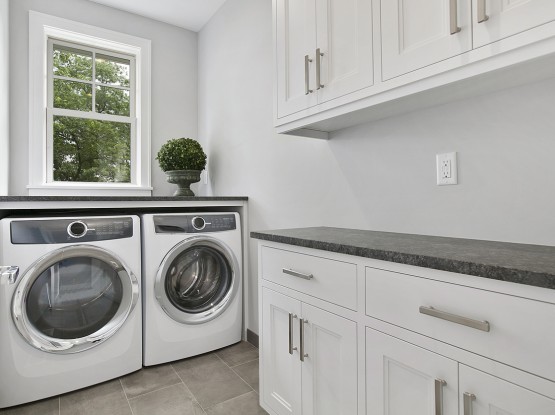The installation of hardwood floors can drastically improve the look and feel of any house, quickly taking it from dull and boring to fresh and modern. There’s a reason that hardwood floors are becoming more and more popular among homeowners and home buyers. Besides looking great, there are plenty of benefits that they provide. Read about some of them below.
Benefits of Having Hardwood Floors in a Home
Low Maintenance
Compared to carpet, hardwood floors are very easy to clean and to maintain. A quick run of the vacuum to remove debris, followed by a sweep and you’ve got a clean house. Spill something like food or liquid on the floor? Simply wipe it up and move on. No need to bring out the vacuum and go over the same spot 20 times hoping that the stain will eventually come out. By periodically cleaning your floors using wood soap, you can do a “wet mop,” which allows for a deeper cleaning, eliminating any potential bacteria or stains while also adding an appealing shine to your floor.
Hardwood floors are especially convenient when you have pets. Did your dog have an accident in the house? No worries. It’s easily cleaned up in seconds. Also, no need to worry about dealing with dog and cat hair all throughout the house. Hair can be quickly swept up, leaving you with a beautiful floor.
Increased Home Value
Just like an outdoor deck or renovated kitchen can add value to your home, having hardwood floors installed in your home can add to your property value as well. The same reasons you want to install hardwood floors are why other home buyers want to buy a house that already has them. Down the line, when you decide to sell your home, you’ll have a much easier time doing so because of the hardwood flooring.
Durability
Homeowners tend to opt for hardwood floors because they know that once they’ve been installed, simple maintenance will allow them to last decades without being replaced. The same can’t be said for carpet. Hardwood floors are also able to withstand more wear, higher traffic, and overall use without getting damaged.
Improved Quality of Air
One of the biggest benefits of hardwood floors for those with allergies, sensitive noses, or difficulty breathing is an overall better quality of air. By installing hardwood floors, you’ll no longer need to deal with dust, pollen, animal hair and dander lingering in carpet fibers where vacuums can’t reach, making it difficult for you to breathe in your home.
Different Kinds of Hardwood Flooring
Hardwood flooring is a very broad term for household flooring made of wood, but there are several different kinds of hardwood flooring. Figuring out which one is right for you and your home will depend on what kind of look and feel you prefer, how much money you’re willing to spend, and your preferences to the species of wood that is used.
There are five commonly used hardwood species when it comes to residential flooring. These are oak, hickory, cherry, maple, and walnut. But prior to deciding on a species of wood, it is important that you understand both types of hardwood flooring and to make a decision between the two. The two types are solid and engineered. Solid hardwood flooring boards are made of a single piece of wood, whereas engineered hardwood boards are made up of multiple layers with the top layer being real hardwood.
Solid Hardwood
Solid hardwood flooring can be refinished multiple times, which is why it can last for decades upon installation if maintained properly. Its design is meant for it to be nailed into a wood subfloor, thus making it a part of the floor. Solid hardwood isn’t recommended for areas like basements because of the increase in humidity levels, which can cause the hardwood to warp.
Engineered Hardwood
This type of hardwood is made of multiple layers, with real hardwood being the top layer. The top layer can also be vinyl or tile for a fully engineered option. In comparison to solid hardwood, engineered hardwood allows for more flexibility as it can be installed over different floorings, such as concrete, wood, tile, etc. Rather than being nailed into a subfloor, these planks are snapped together by grooves that line the sides of the planks. Engineered hardwood is able to withstand higher humidity, thus making it a good option for basements. The nice thing about engineered hardwood is that it comes prefinished, so once it’s installed, your work is done.
Unfinished vs. Prefinished Hardwood Flooring
When it comes to deciding on a finish, or lack thereof, for that matter, it really depends on your preference. Unfinished flooring is the smoother option because once it’s been installed, it gets sanded, and stained, which leaves an even, smooth finish across the entire floor. Unfinished flooring also allows you to decide on custom colors if you have a certain shade or finish that you prefer that isn’t normally available. But on the downside, it does take longer to install and is a messier project due to sanding and staining that is necessary.
Prefinished hardwood flooring is available in an assortment of colors, but if you’re not satisfied with the color selection provided, you’re out of luck as it can’t be customized. Prefinished hardwood costs more than unfinished for obvious reasons, but you can save money on the installation of the flooring. Overall, over the course of the project, electing to go with a prefinished hardwood floor can save you both time and money.
With the information above, you can get a good idea of the benefits of having hardwood floors installed in your home. The installation of hardwood floors can take some time, especially if the installation is done single-handedly.
The installation process is begun by measuring the entire area in which hardwood flooring is expected to go. Whether or not the area has a subfloor is important as it will determine which type of flooring can be installed. If there is a subfloor in place, both solid and engineered hardwood are eligible to be installed. No subfloor means that only engineered hardwood can be installed.
The next step is to roll vapor barrier paper across the area where flooring is being installed. Vapor barrier paper is used for damp proofing, which helps resist moisture from getting into the floor. Once that’s been completed, the installation process begins. Solid hardwood requires the nailing in of each piece, whereas engineered flooring is similar to putting together a puzzle, in which each piece fits into one another because of the grooves in the side of the flooring.
It’s important to accurately lay out the first row of boards that will be installed. This will become the row that the rest of the flooring is based on. The standard process is to begin at the longest uninterrupted wall that is perpendicular to the house’s joists. The first and last rows of flooring have to be nailed through the face of the boards, whereas the others are nailed through the tongue. Once the first board has been fastened, the remainder of the first row is continued from there on out, by laying boards in the order they’re to be installed. It’s possible that cuts and such are needed to be made when installing flooring around obstacles or corners in the house.
Trust the Installation of Hardwood Floors to the Experts
Before you dive right into installing your hardwood floors alone, you should know where to find a team of experienced designers and contractors that can make your hardwood flooring ideas come to fruition. Our team can provide you with the direction and vision you need when you’ve made the decision that you’re ready for hardwood floors.
Let our team be the ones to give you the hardwood floors you’re looking for! At Malek Construction, our team works hard to make you feel right at home. Contact us and we’ll help you with the installation of hardwood floors that match your design goals.





